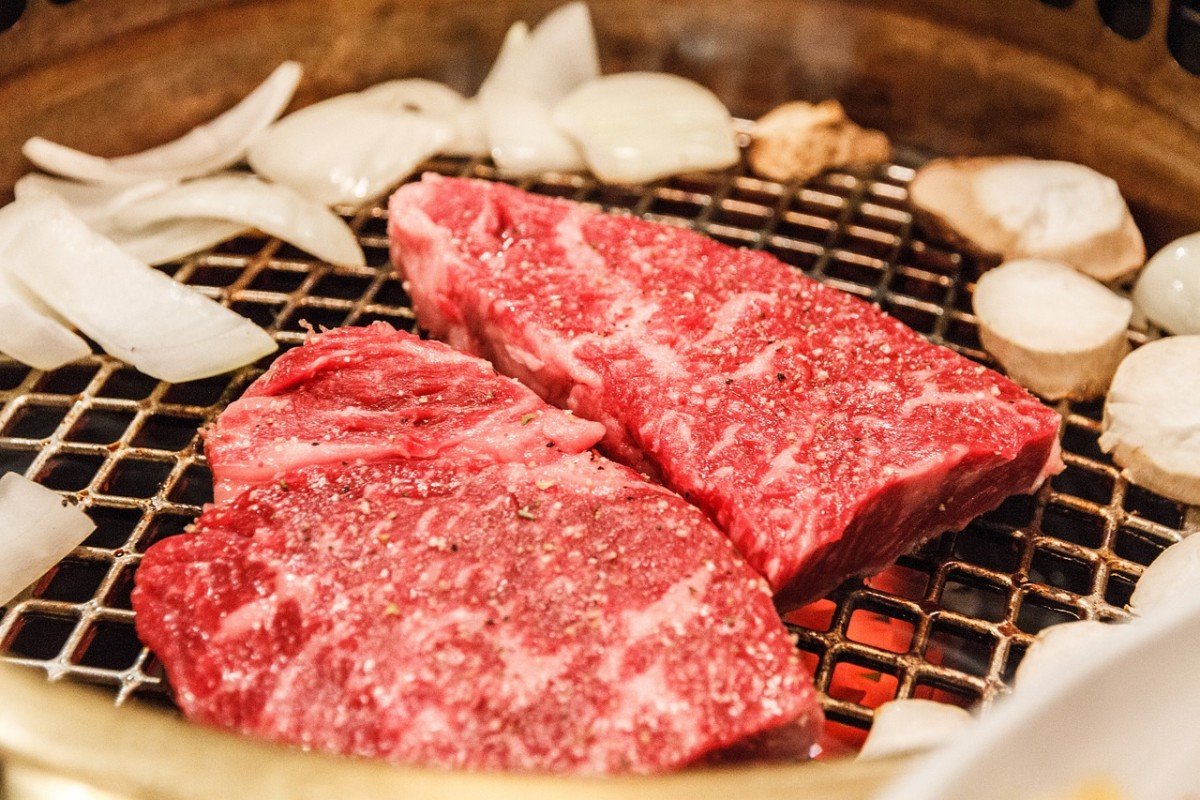Kobe beef is often considered the gold standard for premium beef, renowned for its rich flavor and exquisite tenderness. Originating from the Tajima strain of Japanese Black cattle, Kobe beef comes from the Hyogo Prefecture, specifically the city of Kobe. Its strict grading system ensures that only cattle meeting specific criteria can be labeled as Kobe beef. This quality control is what gives Kobe its prestigious status in the culinary world.
One of the defining features of Kobe beef is its unique marbling, which refers to the delicate streaks of intramuscular fat found within the meat. This marbling not only enhances the flavor but also contributes to the melt-in-your-mouth texture that Kobe is famous for. The intense marbling is a result of the cattle being raised in a stress-free environment, often accompanied by a special diet, which includes high-quality grains and sometimes even beer!
To qualify as Kobe beef, the cattle must be born and raised in Japan, and they must be slaughtered at a minimum age, ensuring that the beef is well-developed and flavorful. The meat is graded on a scale of A to C for yield and 1 to 5 for quality, with A5 being the highest ranking. Only a small number of cattle receive this designation each year, making Kobe beef a rarity and a delicacy sought after by chefs and food enthusiasts alike.
In recent years, the popularity of Kobe beef has surged, leading to some controversy over its authenticity. While many may offer “Kobe-style” beef, true Kobe beef can only come from the designated region in Japan. As diners indulge in this luxurious cut, they’re not just enjoying a superior meal; they’re also experiencing a piece of Japanese culture and tradition that has been meticulously preserved for generations.
Wagyu Beef Overview
Wagyu beef is renowned for its exceptional quality, rich flavor, and tender texture, making it one of the most sought-after meats in the culinary world. Originating from Japan, the term "Wagyu" translates to "Japanese cow." This classification encompasses several breeds of cattle, each contributing to the unique characteristics of the beef. Among these breeds, the most famous is the Japanese Black cattle, celebrated for its high levels of marbling and deep umami flavor.
The unique rearing conditions and feeding practices of Wagyu cattle play a crucial role in producing its distinctive taste and texture. Farmers often prioritize individual care, feeding the cows a special diet that may include grains, grasses, and even sake mash. This attention to detail helps achieve the famous marbling, which refers to the delicate streaks of fat interspersed within the muscle. The marbling not only enhances the flavor but also contributes to the beef's melt-in-your-mouth texture.
Wagyu beef is also graded based on its quality and marbling, with the highest grades commanding premium prices. In Japan, the most esteemed grades are A5 and A4, indicating superior marbling and tenderness. As Wagyu beef has gained popularity worldwide, several countries now produce their own versions of Wagyu, including the United States and Australia, while still adhering to specific breeding and raising practices to maintain its distinguished qualities.
Unlike its famous counterpart, Kobe beef, which comes exclusively from the Tajima strain of Japanese Black cattle in the Hyogo Prefecture, Wagyu beef encompasses a broader range of cattle and regions. This distinction is essential for understanding the full landscape of high-quality beef, as not all Wagyu is Kobe, but all Kobe is, by definition, Wagyu. It’s this variety within Wagyu that not only infuses the culinary scene with diversity but also sparks ongoing debate among meat enthusiasts about the best cuts and flavors.
Taste and Texture Comparison
When it comes to comparing Kobe and Wagyu, one of the most striking differences lies in their taste and texture. Both types of beef are renowned for their rich flavor profiles, but they each offer a unique experience that sets them apart. Kobe beef, coming from the Tajima strain of Wagyu cattle raised in the Hyogo Prefecture of Japan, is known for its buttery and sweet taste. Its high-fat content gives it a melt-in-your-mouth quality that many people find irresistible.
Wagyu, on the other hand, encompasses a broader category of beef that includes several strains of Japanese cattle. While Wagyu beef can share some of the same rich flavor and tenderness found in Kobe, it may not always reach the same level of marbling. The taste can vary significantly depending on the cattle's diet, breeding, and the region in which they are raised. Generally, Wagyu tends to have a less intense flavor compared to Kobe, but it still maintains a luxurious and fatty profile that beef lovers crave.
In terms of texture, both Kobe and Wagyu beef are exceptionally tender due to their high intramuscular fat levels. However, Kobe beef stands out with its extraordinary marbling that often results in a velvety-smooth texture. When cooked, Kobe beef practically dissolves in your mouth. Wagyu beef can also boast a tender texture, but the overall experience might be slightly firmer compared to Kobe. This slight difference in texture is often a topic of debate among culinary enthusiasts and can greatly influence personal preference.
Ultimately, whether you choose Kobe or Wagyu, both offer a delicious and sumptuous dining experience. The nuances in taste and texture can enhance your appreciation for these remarkable meats, making each bite a memorable one. For many, the decision may simply come down to personal preference and the desire to explore the unique qualities of each.
Cooking Methods for Each
When it comes to cooking Kobe and Wagyu beef, the methods can greatly enhance their unique textures and flavors. Both types of beef are known for their rich marbling and tenderness, but using the right cooking techniques can elevate your dining experience even further.
For Kobe beef, one of the most popular cooking methods is to grill it lightly. Given its high-fat content, a quick sear on a hot grill can help maintain the juicy texture while still allowing the exterior to develop a nice crust. It's essential to keep cooking times short and temperatures moderate, as overcooking can lead to a loss of that signature melt-in-your-mouth experience.
Wagyu beef, on the other hand, is versatile and can be prepared using various methods, including pan-searing and sous vide. When pan-searing Wagyu, it's recommended to use a cast-iron skillet with minimal oil, letting the beef's natural fats do the work. Sous vide cooking allows for precise temperature control, which is excellent for achieving the perfect doneness without sacrificing the beef's tenderness and flavor.
Regardless of the method, both Kobe and Wagyu benefit from being served simply, allowing the natural flavors to shine through. Whether you choose to season lightly with salt and pepper or serve with a delicate sauce, the quality of the beef will certainly take center stage.

